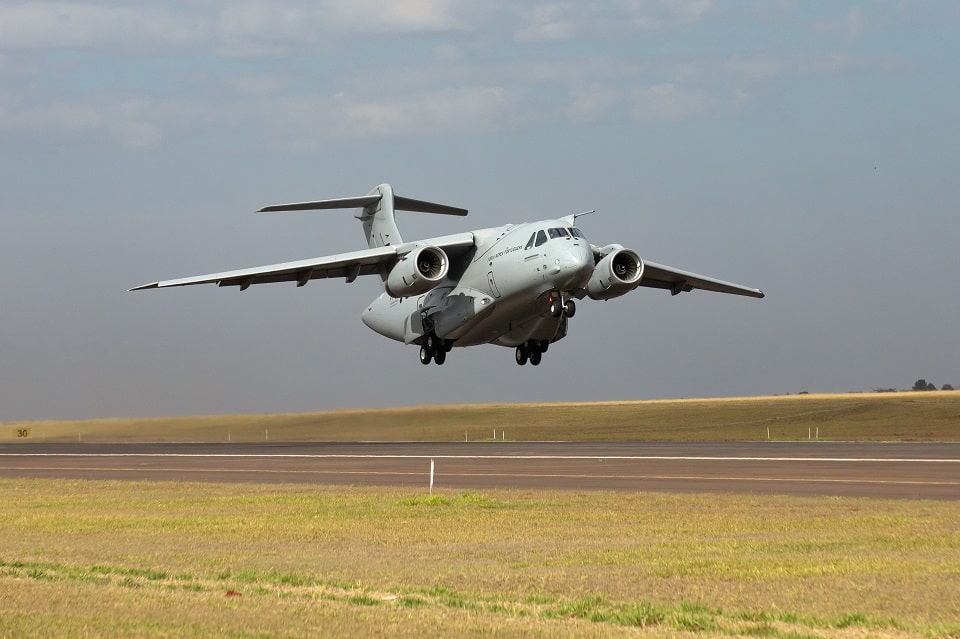Aerospace
First KC-390 Millennium in NATO configuration. What is NATO’s configuration for military aircraft?

The first KC-390 Millennium of the Portuguese Air Force (FAP) made its official debut as it entered into service at the Beja Air Base. This significant milestone marked the culmination of a meticulous process to ensure that the aircraft adhered to the stringent requirements stipulated by the National Aeronautical Authority (AAN) of Portugal.
This remarkable aircraft was equipped with standard NATO (North Atlantic Treaty Organization) equipment, seamlessly integrated into its design. The successful integration of this equipment was the result of an extensive flight test campaign conducted right here in Portugal, showcasing a collaborative effort between Embraer, OGMA, and the Portuguese Air Force (FAP).
NATO, or the North Atlantic Treaty Organization, has established a robust framework for configuring military aircraft to foster interoperability and cohesion among its member nations. This configuration entails a comprehensive set of standards and guidelines, spanning various crucial elements within the realm of aviation technology and military readiness. The primary aim is to facilitate the seamless collaboration of military aircraft from NATO countries during joint operations and exercises, bolstering the effectiveness of the alliance.
The key components of NATO configuration for aircraft encompass the following:
- Communication Systems: NATO mandates standardized radio frequencies, encryption methods, and communication protocols. This standardization ensures that aircraft from diverse nations can communicate effortlessly during missions, promoting real-time coordination and information exchange.
- Avionics: The establishment of common avionics interfaces and systems streamlines the integration of diverse sensors and mission-specific equipment. This interoperability enables aircraft from different nations to operate collectively with optimized efficiency.
- Armament: A critical aspect of NATO configuration involves harmonizing weapon systems. This may include adhering to NATO-standard munitions and compatible weapons racks. The aim is to ensure that aircraft can share and utilize armaments seamlessly, regardless of their country of origin.
- Logistics: To facilitate the exchange of spare parts and the maintenance and support of aircraft during deployments, NATO enforces standardized logistics procedures. This helps member nations maintain their fleets and sustain operational readiness.
- Training: NATO configuration standards encompass common training and procedures to equip aircrews from various member nations with the skills and knowledge required to collaborate effectively. This mutual training ensures that personnel can operate jointly and efficiently.
- Safety Standards: Safety is paramount in military operations. NATO has implemented shared safety standards and procedures to enhance the safety of all personnel involved in NATO operations. These standards are continuously updated to align with technological advancements and changing operational requirements.
In summary, the NATO configuration for aircraft serves as a foundational framework that allows military aircraft from member countries to operate in concert seamlessly. This harmonization enhances the collective capabilities of the alliance and ensures that NATO forces can respond effectively to a wide range of security challenges.

Aerospace
When Ratan Tata was denied entry to the airfield at the Aero India show, he waited

During our visit to Aero India 2019, we had the unexpected opportunity to see Ratan Tata at the event, which was a thrilling moment for us. However, there was a surprising hiccup when the security staff didn’t allow him to enter due to a lack of a security pass.
Despite this, he remained calm and patiently waited for about 20 minutes until a member of the Tata team brought him the required pass, after which he calmly proceeded inside. It was a humbling sight, showcasing his composed demeanor even in such situations.
Ratan Tata ji is not only a renowned industrialist but also a trained pilot, holding a pilot’s license. In 2007, he became the first Indian civilian to fly the F-16 Falcon during the Aero India show in Bangalore—a proud moment for the nation.
His passion for aviation extended beyond flying, as he played a key role in shaping India’s aerospace industry. Under his leadership, Tata ventured into manufacturing and maintaining aerospace components while upholding its legacy of quality. Notably, Tata’s collaboration with Airbus to develop and manufacture the C295 aircraft is a testament to its growing influence in the sector.
-

 Aviation2 months ago
Aviation2 months agoMicrosoft Flight Simulator Raises $3 Million to Bring Back the An-225 Mriya
-

 Airlines2 months ago
Airlines2 months agoQatar Citizens Can Travel to the United States Without a Visa
-

 Aviation2 months ago
Aviation2 months agoQatar Airways bans these new Electronic Devices on plane
-

 Airlines2 months ago
Airlines2 months agoJapan Airlines Rolls Out Free Domestic Flights to International Passengers
-

 Travel2 months ago
Travel2 months agoQatar Airways Launches Four Additional Flights from Amsterdam
-

 Defence2 months ago
Defence2 months agoWhich Country Has the Largest Fleet of Fighter Aircraft?
-

 Airport2 months ago
Airport2 months agoWestern Sydney Airport Welcomes Its First Plane After 6 Years of construction
-

 Airlines4 days ago
Airlines4 days agoDAMAC Air: Dubai’s New Luxury Airline Offers Free Flights for Registration








